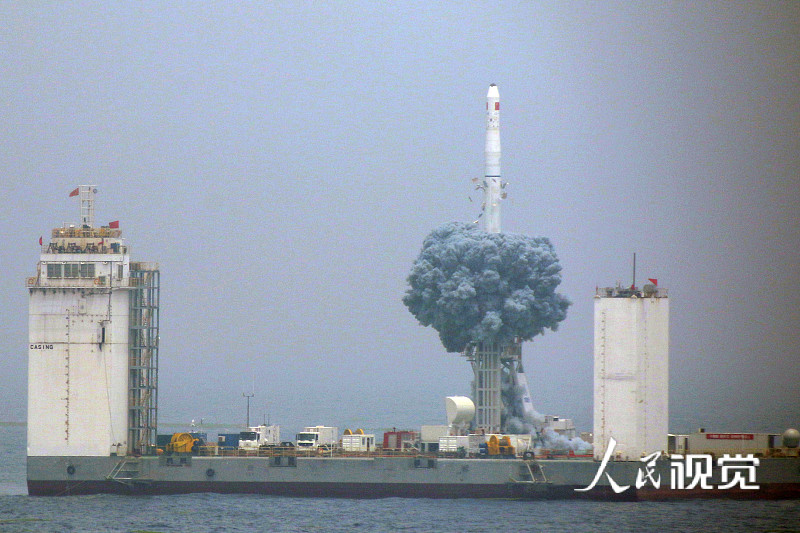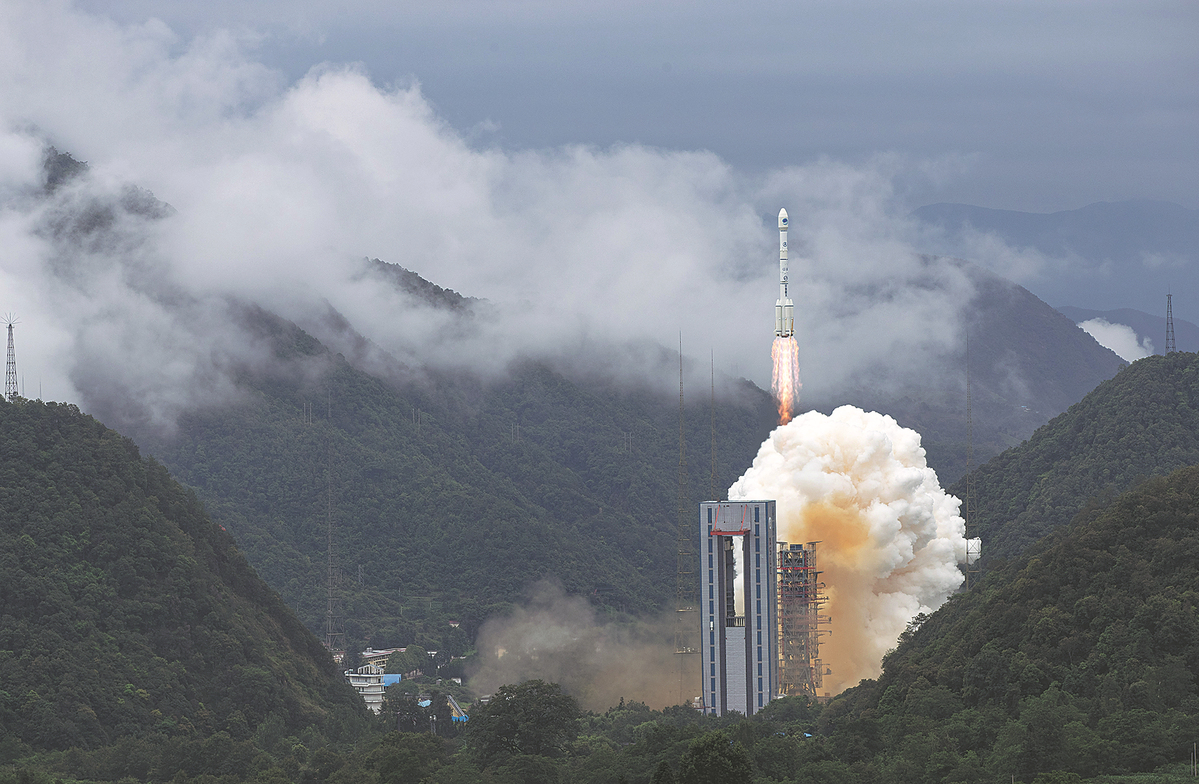
1. Dec 2, 2013
China starts the Chang'e 3 mission to send a robotic probe on a historic expedition to the moon. After about 12 days of flight, the Chang'e 3 probe soft-lands on the lunar soil, becoming the first Chinese spacecraft to do so and the first craft of any country to achieve this goal in nearly four decades. Chang'e 3 then releases the first Chinese lunar rover, Yutu, on the moon. Yutu works there for nearly 1,000 days, until July 2016.
2. Nov 3, 2016
China carries out the debut mission of its largest and mightiest carrier rocket, the Long March 5, at the Wenchang Space Launch Center in Hainan province, to transport a scientific-experiment satellite into space. The strongest and most technologically sophisticated rocket ever built by China, the Long March 5 has a liftoff weight of 869 metric tons and a maximum carrying capacity of 25 tons to a low-Earth orbit or 14 tons to a geosynchronous transfer orbit. Its payload capacity is about 2.5 times more than any other Chinese rocket.
3. Dec 8, 2018
China launches its fourth lunar probe, Chang'e 4, toward the far side of the moon, which always faces away from Earth. Twenty-six days into its journey, the unmanned spacecraft makes a soft-landing on the Von Karman crater in the South Pole-Aitken basin, inaugurating mankind's first close observation of the moon's little-known far side. The mission's core component-the Yutu 2 rover-has worked on the moon for nearly 1,400 days and has traveled nearly 1,300 meters on the lunar soil, making it the longest-working rover of all time.

4. June 5, 2019
China uses a Long March 11 solid-propellant carrier rocket to perform the country's first seaborne space launch in its territorial waters in the Yellow Sea. Before the seaborne mission, China had conducted more than 310 carrier rocket launches at its four land-based space launch centers.
5. July 25, 2019
Beijing-based space startup i-Space becomes China's first private enterprise to successfully conduct an orbital mission, as the company launches its first SQX-1 carrier rocket at the Jiuquan Satellite Launch Center in Northwest China to send two satellites and three experimental payloads into space. Two previous attempts by private Chinese companies-LandSpace and One-Space-to conduct orbital launches failed in flight due to malfunctions.

6. July 31, 2020
China announces that its domestically developed Beidou Navigation Satellite System has been completed and has started providing full-scale global services. Since 2000, a total of 59 Beidou satellites, including the first four experimental ones, have been launched from Xichang on 44 Long March 3-series rockets. Some of the satellites have since been retired.

7. Nov 24, 2020
The Chang'e 5 robotic mission is launched from Wenchang and successfully lands on the moon on Dec 1. The mission brings 1,731 grams of lunar rocks and soil back to Earth on Dec 17, achieving a historic accomplishment about 44 years after the last lunar substances were brought back. The 23-day mission made China the third country to retrieve lunar samples, after the United States and the former Soviet Union.
8. July 23, 2020
The Tianwen 1 mission, the nation's first independent interplanetary exploration endeavor, is launched from Wenchang. The spacecraft consists of two major components-a rover named Zhurong and an unnamed orbiter. It travels more than 470 million kilometers before entering Mars' orbit in February 2021. Zhurong touches down on the planet on May 15, 2021, and begins to travel on Martian soil a week later. To date, the rover has traveled nearly 2,000 meters and obtained a great deal of scientific data.

9. April 29, 2021
China begins the in-orbit construction of its Tiangong space station as it launches the first, and central, component of the Tiangong station-the Tianhe core module-from Wenchang. It has three parts-a connecting section, a life-support and control section and a resources section. So far, three groups of Chinese astronauts have lived and worked inside the colossal craft, which is now connected to the Wentian space lab, the Shenzhou XIV spacecraft and the Tianzhou 4 cargo ship.
10. July 24, 2022
China launches its Wentian space laboratory from Wenchang, sending the country's largest-ever spacecraft to become part of the Tiangong space station. Weighing 23 metric tons, the space lab is 17.9 meters tall, roughly equivalent to a six-story building, and has a diameter of 4.2 meters. It is the biggest and heaviest spacecraft China has ever built and the world's heaviest self-propelled spacecraft in service.
Source: China Daily
Editor: Lyu Yun